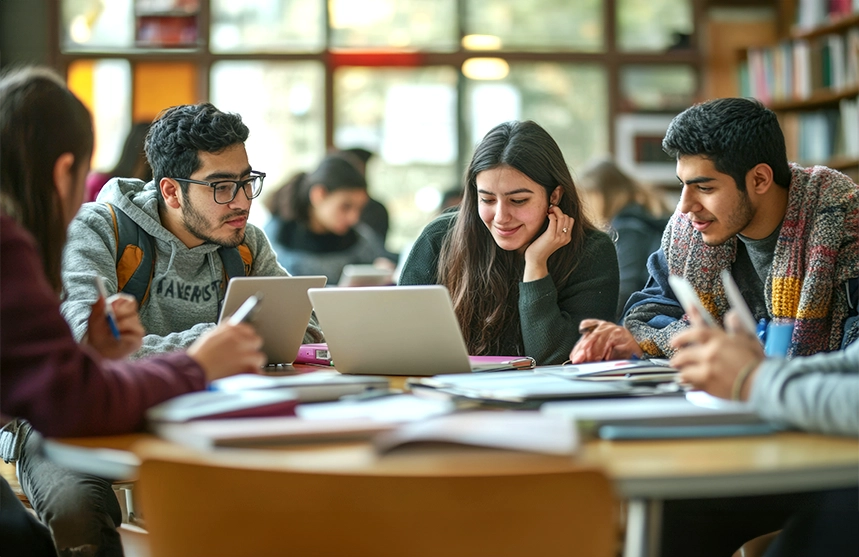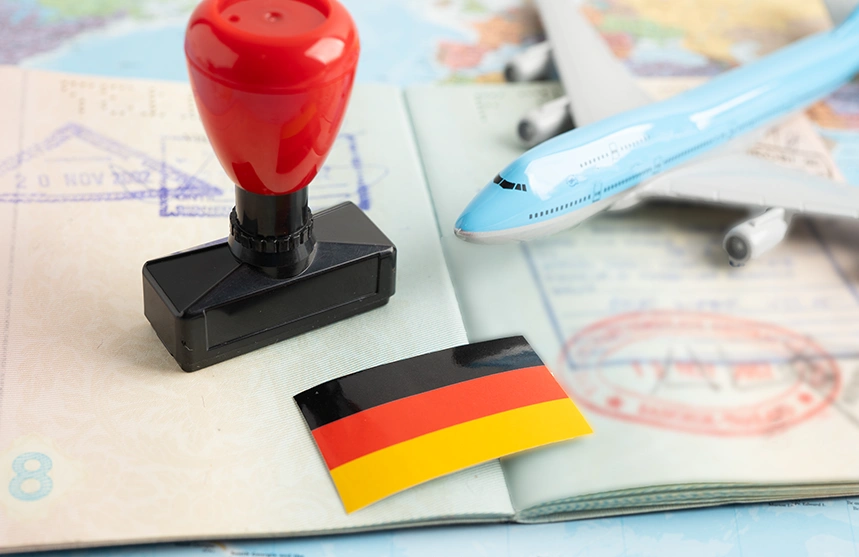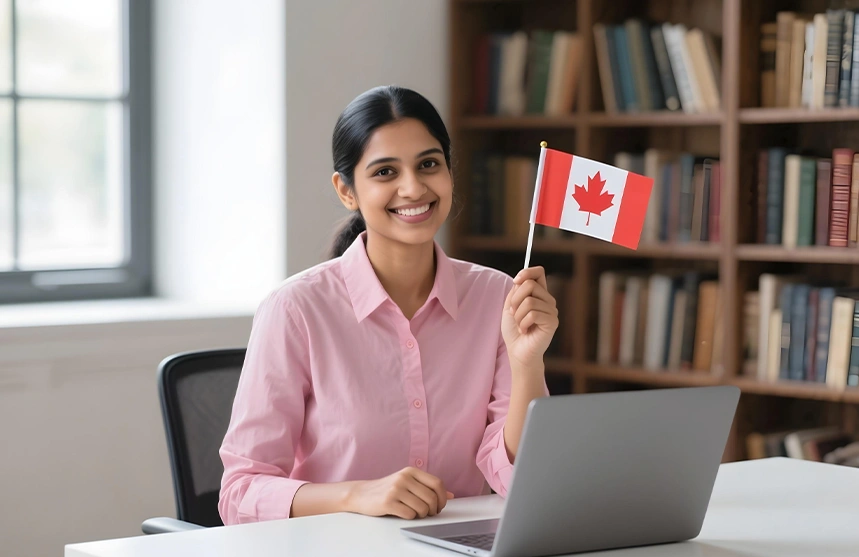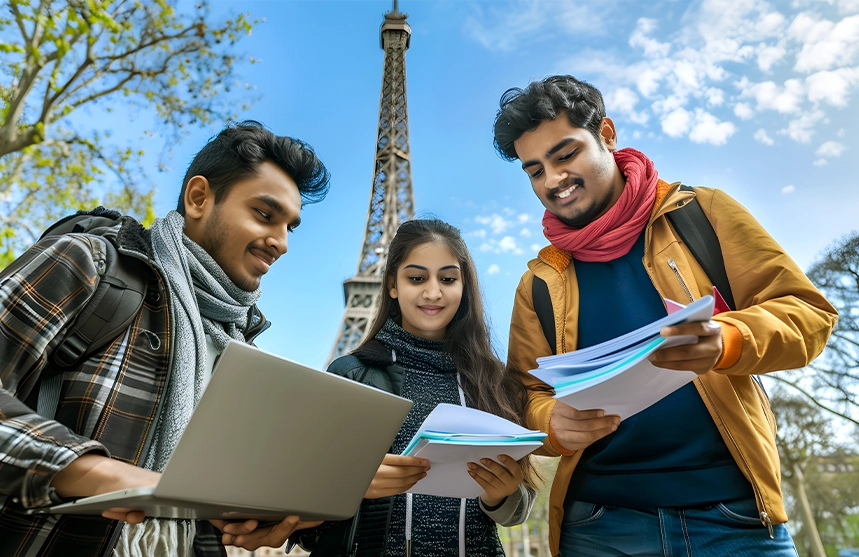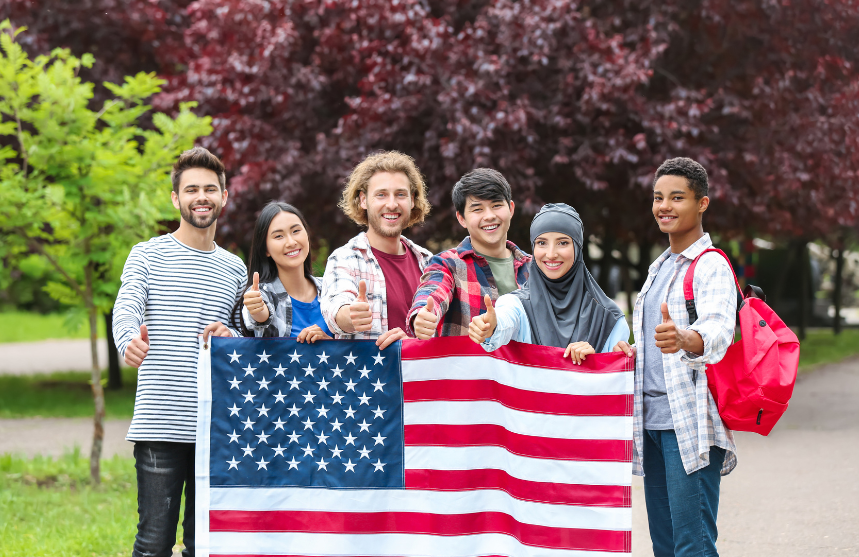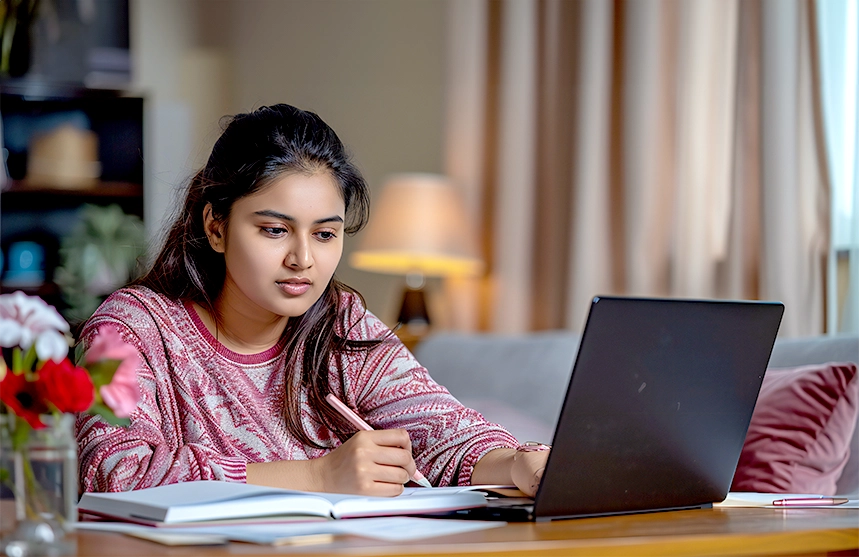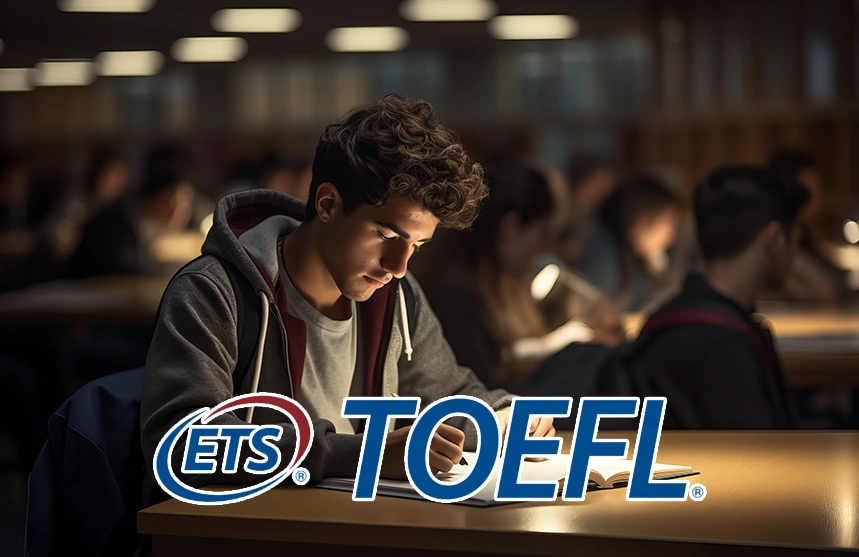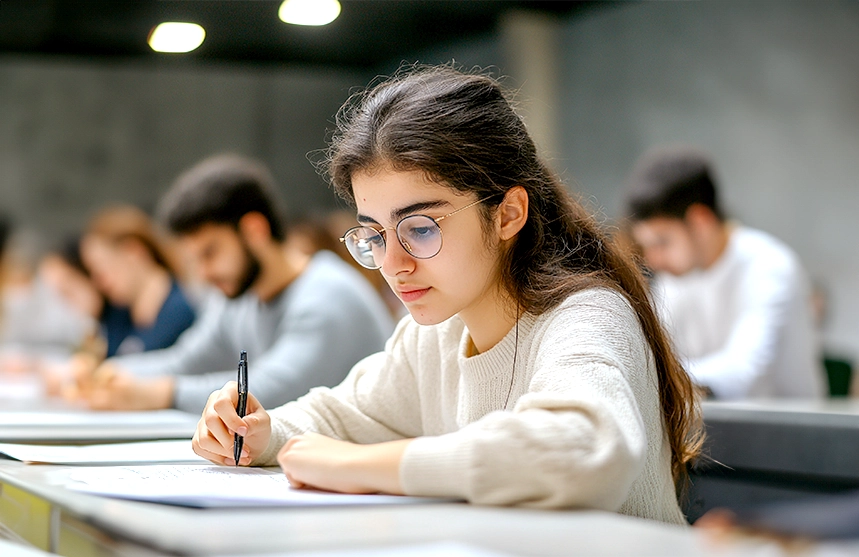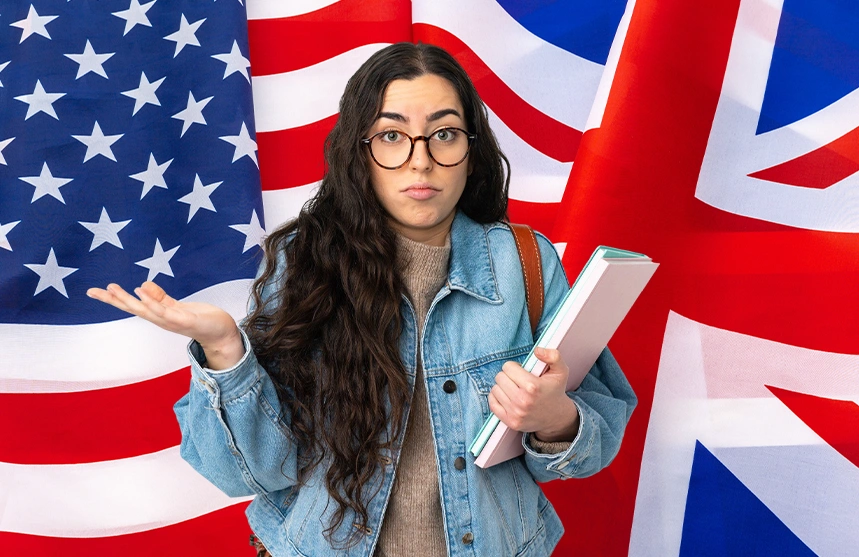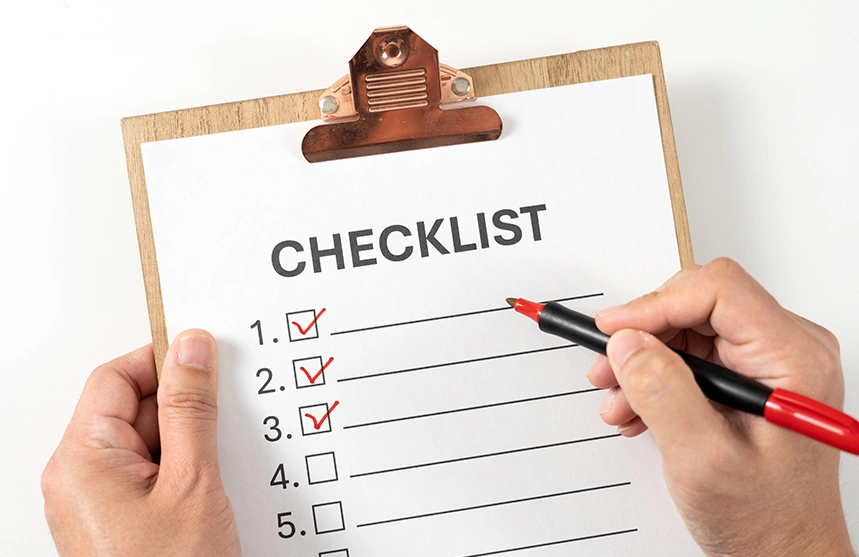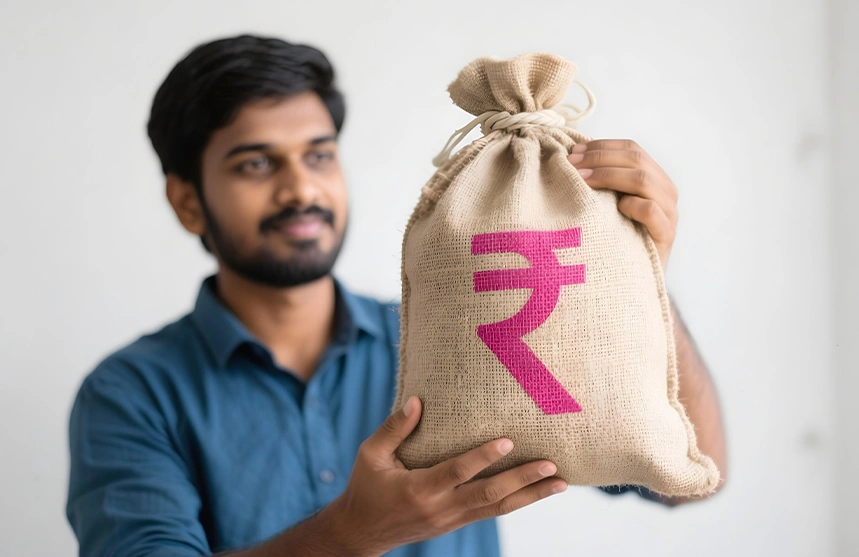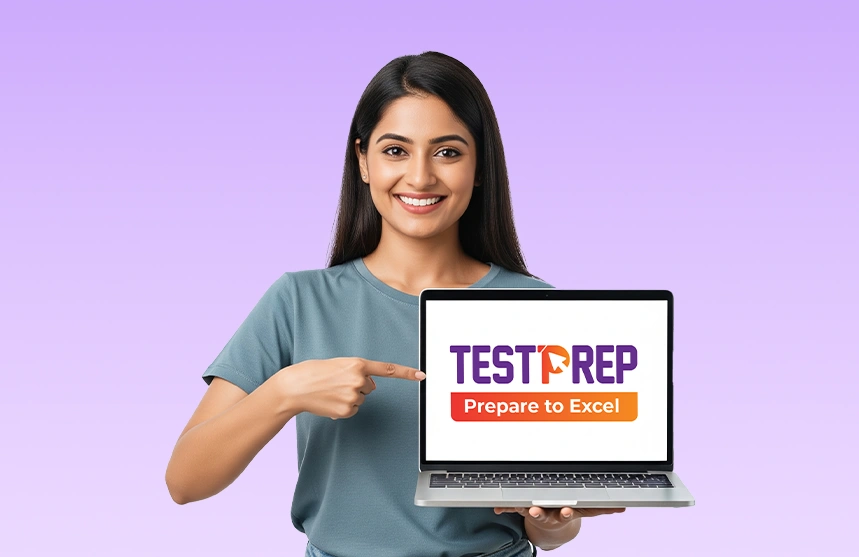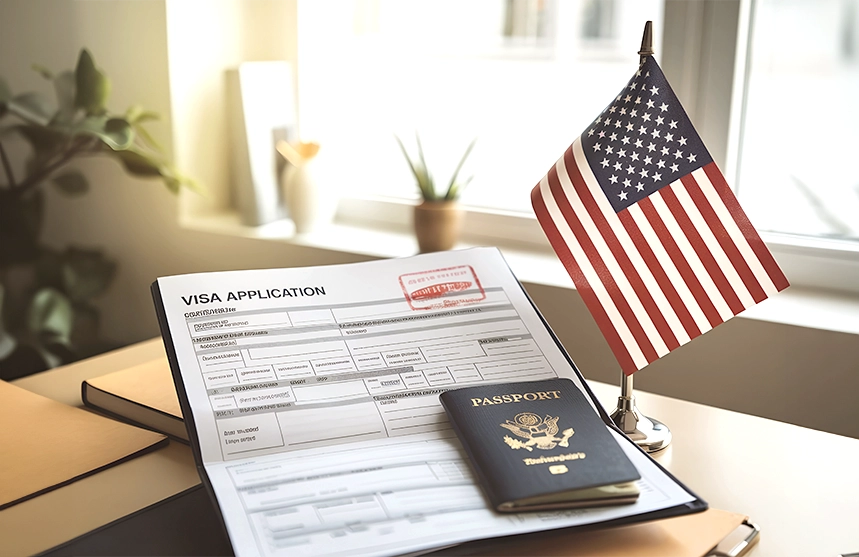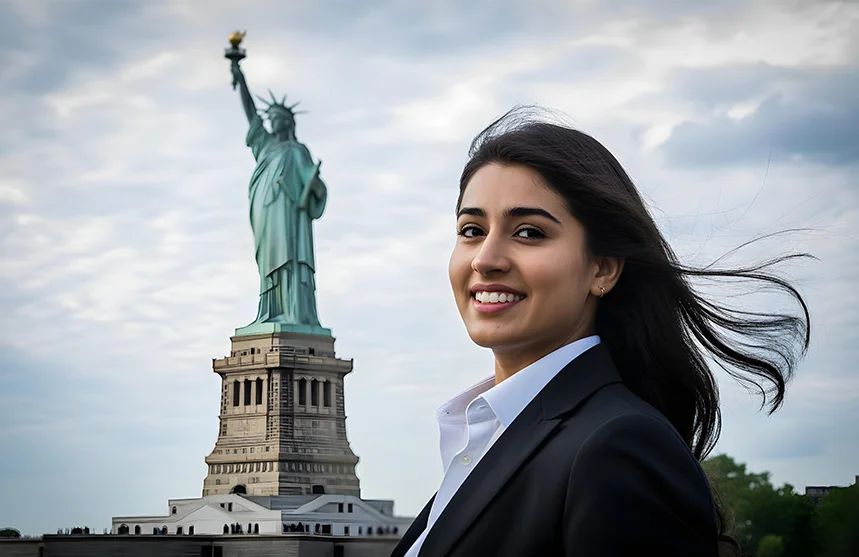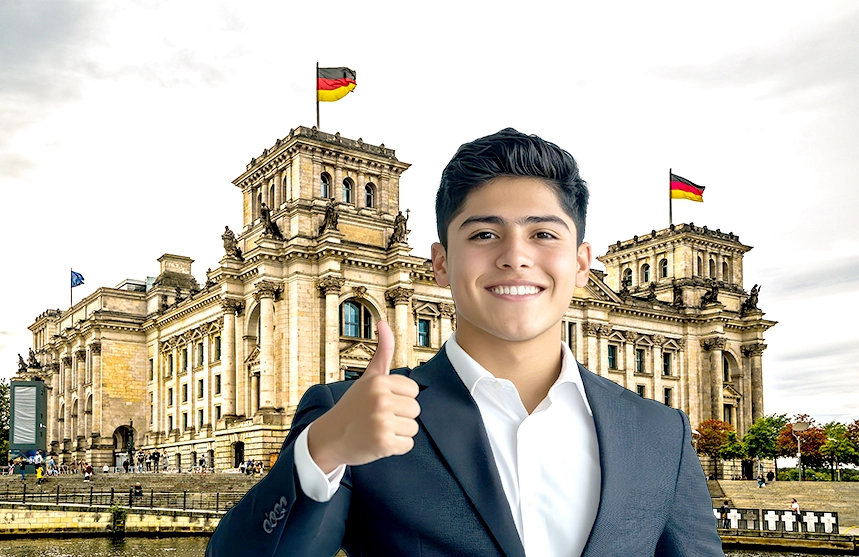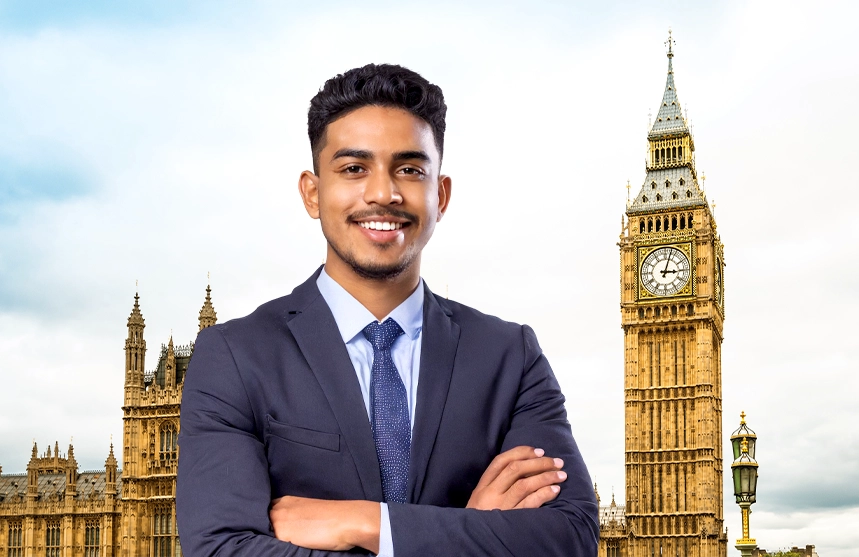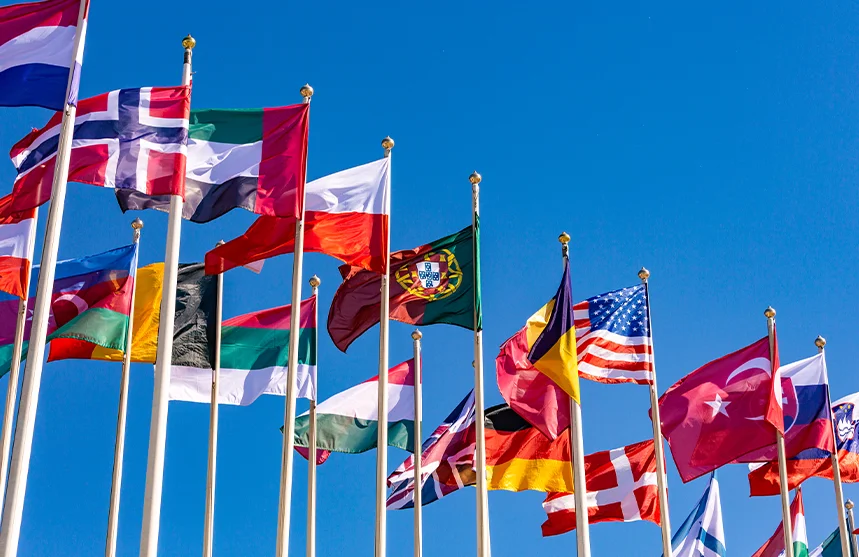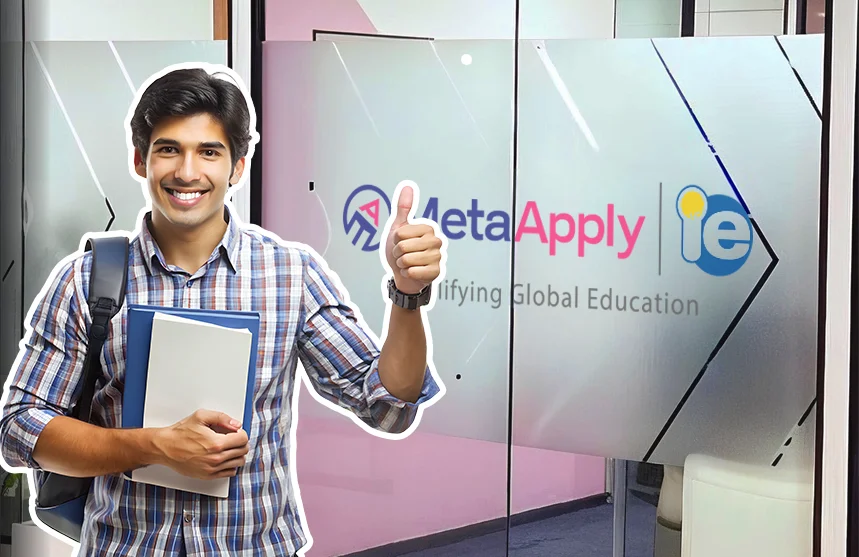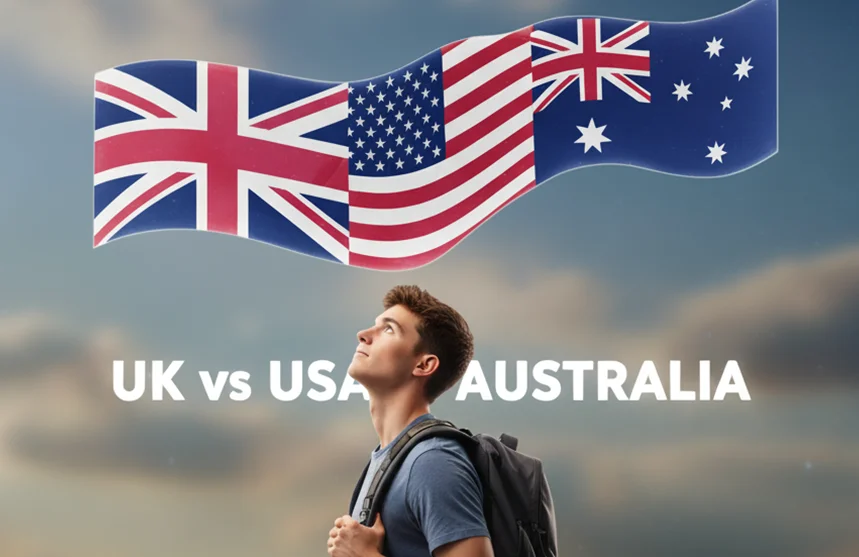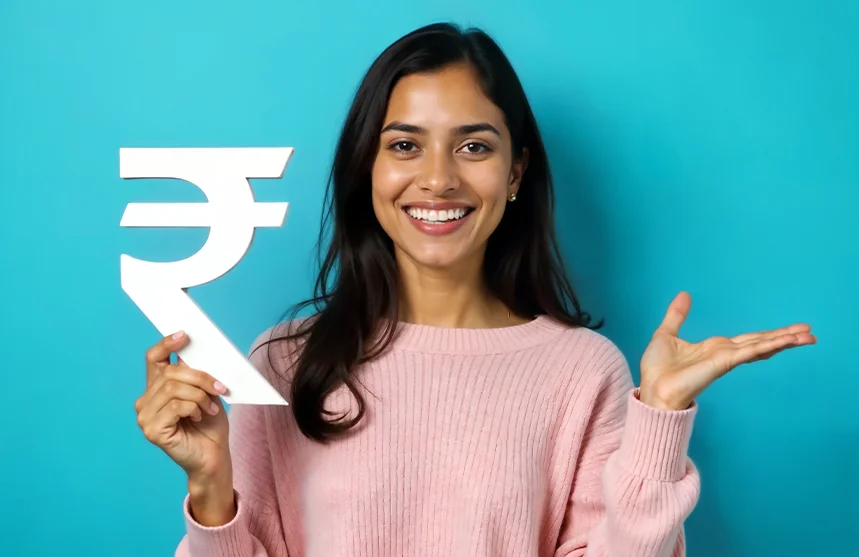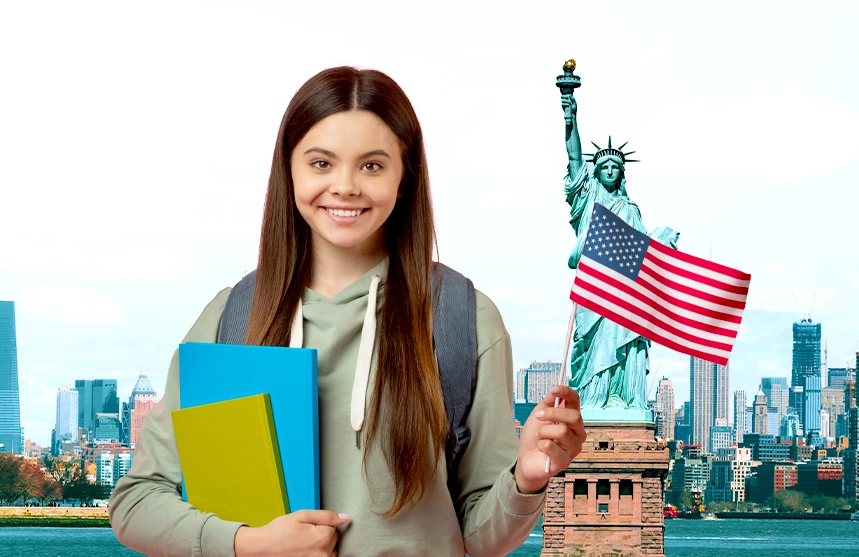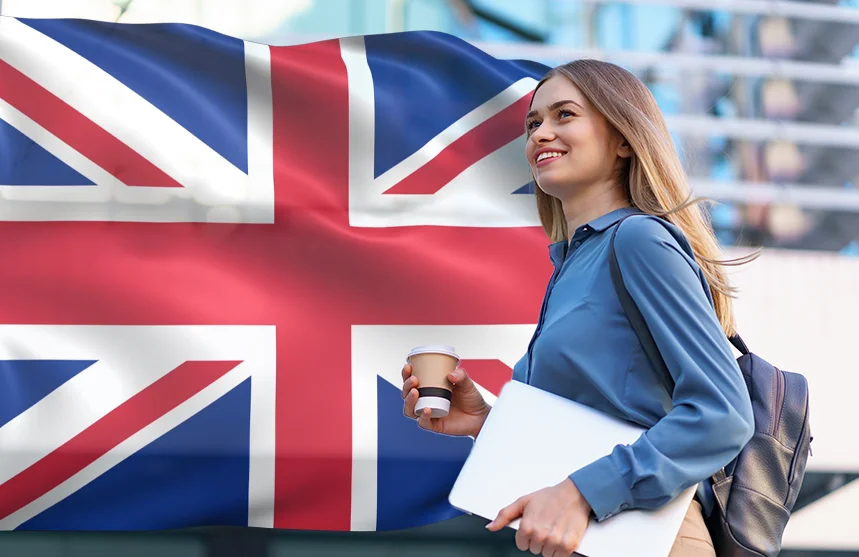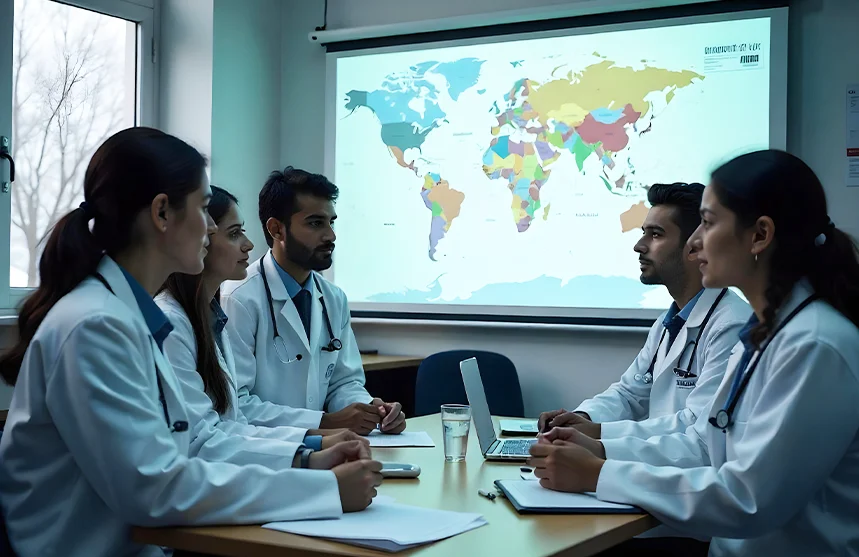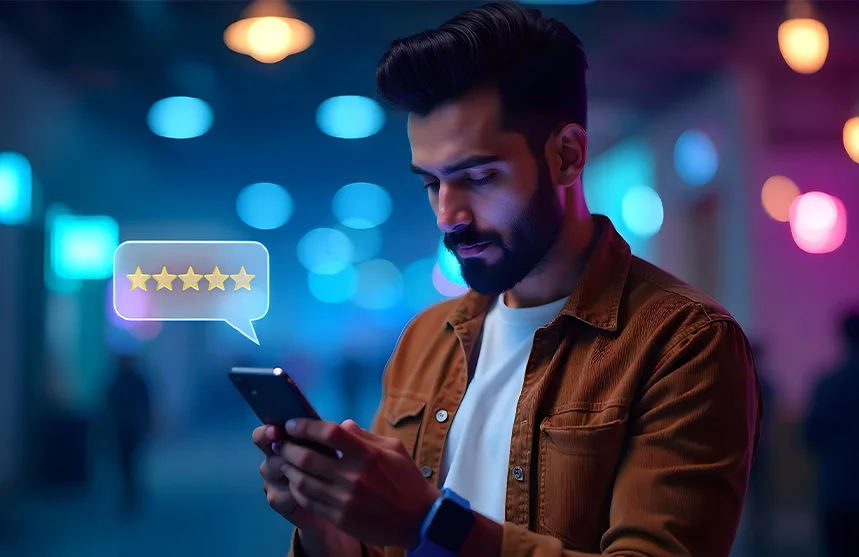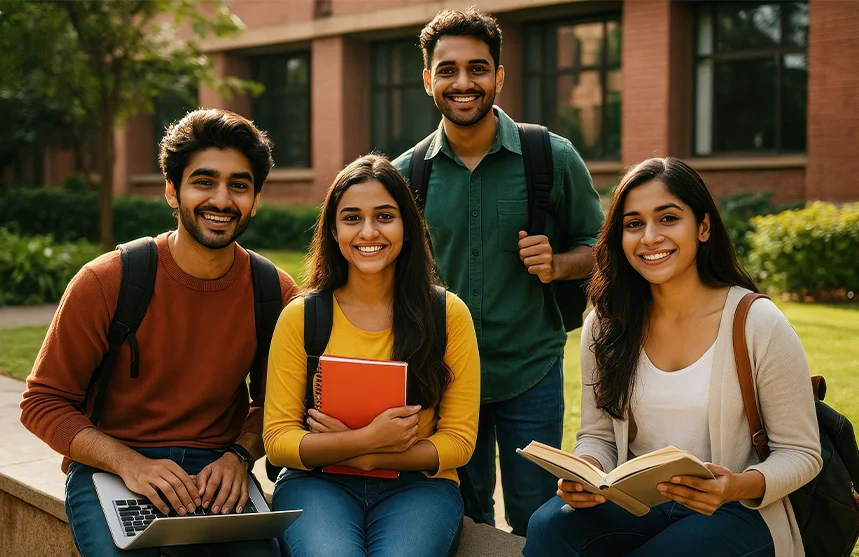Study Abroad Options After 12th: Which Is the Best Option?
Everything You Need to Know About the USA Student Visa
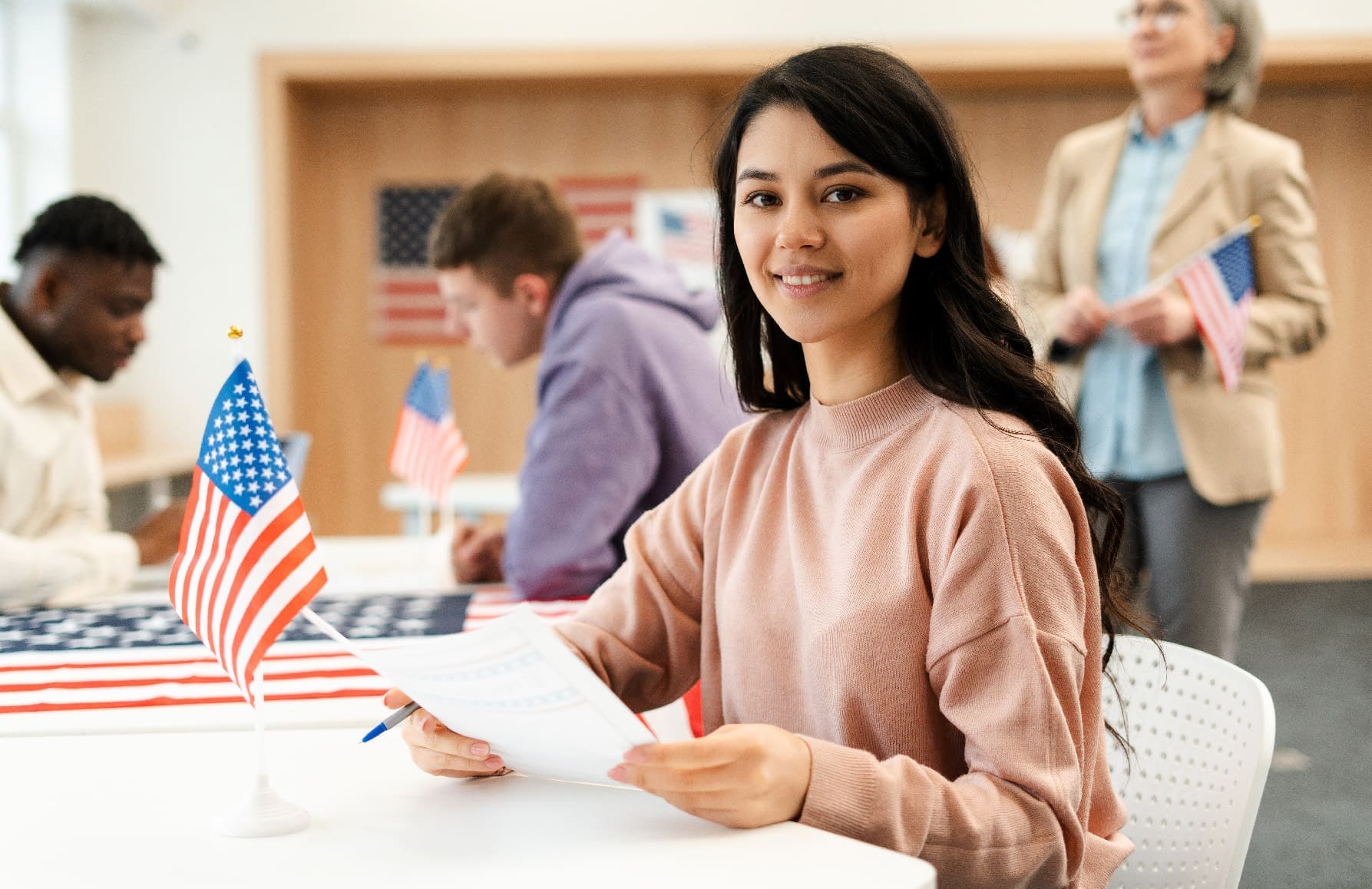
Dreaming of studying in the United States of America? You’re not alone.
Each year, thousands of Indian students choose the USA for its world-class education, cultural diversity, and strong career prospects. In fact, India has now become the leading country of origin for international students and exchange visitors in the USA.
According to the Open Doors Report, in the academic year of 2023-24, 331,602 Indian students were studying in the United States – setting a record by surpassing China as the top source of international students for the first time in 15 years. This marks a 23% increase from the previous academic year, and the numbers are expected to rise even further. According to recent reports from the US Embassy, one in every four international students in the country is from India.
The appeal is clear: USA universities offer globally recognised qualifications, enriching cultural experiences, and promising job opportunities after graduation. But before you pack your bags and board that dream flight, there’s one crucial step – securing your USA student visa.
At MetaApply IE, we understand that the process can feel overwhelming at first. However, with the right preparation and expert guidance, you can navigate it with confidence.
If you’re an Indian student hoping to study in the United States, this comprehensive guide will walk you through:
- How to apply for a USA student visa from India
- The different types of student visas
- Required documents
- Step-by-step application process
- Pre-departure essentials
- Post-arrival requirements in the USA
- Let’s dive in!
Understanding the Types of USA Student Visas: F-1 vs. M-1
The first and most crucial step in your study abroad journey to the USA is identifying the right visa type. While there are several student visa categories, most Indian students aiming for higher education in the US typically apply for the F-1 visa.
The F-1 visa is designed for international students pursuing full-time academic programs at accredited universities, colleges, high schools, language training centres, and other educational institutions.
If you’re planning to enrol in a vocational or non-academic program, then the M-1 visa is the suitable option for you.
Here’s a quick breakdown:
- F-1 Visa: For academic students enrolling in full-time programs at SEVP-certified institutions.
- M-1 Visa: For students attending vocational or technical training schools.
#ProTip: Always ensure that your chosen institution is certified by the Student and Exchange Visitor Program (SEVP) before applying. This is essential for visa eligibility.
How to Apply for a USA Student Visa from India: A Step-by-Step Process
Here’s What You Need to Know About the F-1 Visa
If you’re aiming to study full-time at an accredited institution in the USA, chances are you’ll need an F-1 visa. This visa is the most common choice for Indian students applying for degree programs like bachelor’s, master’s, and PhDs.
Once you’ve confirmed which visa is right for you, let’s move on to the detailed steps for applying for your USA student visa from India.
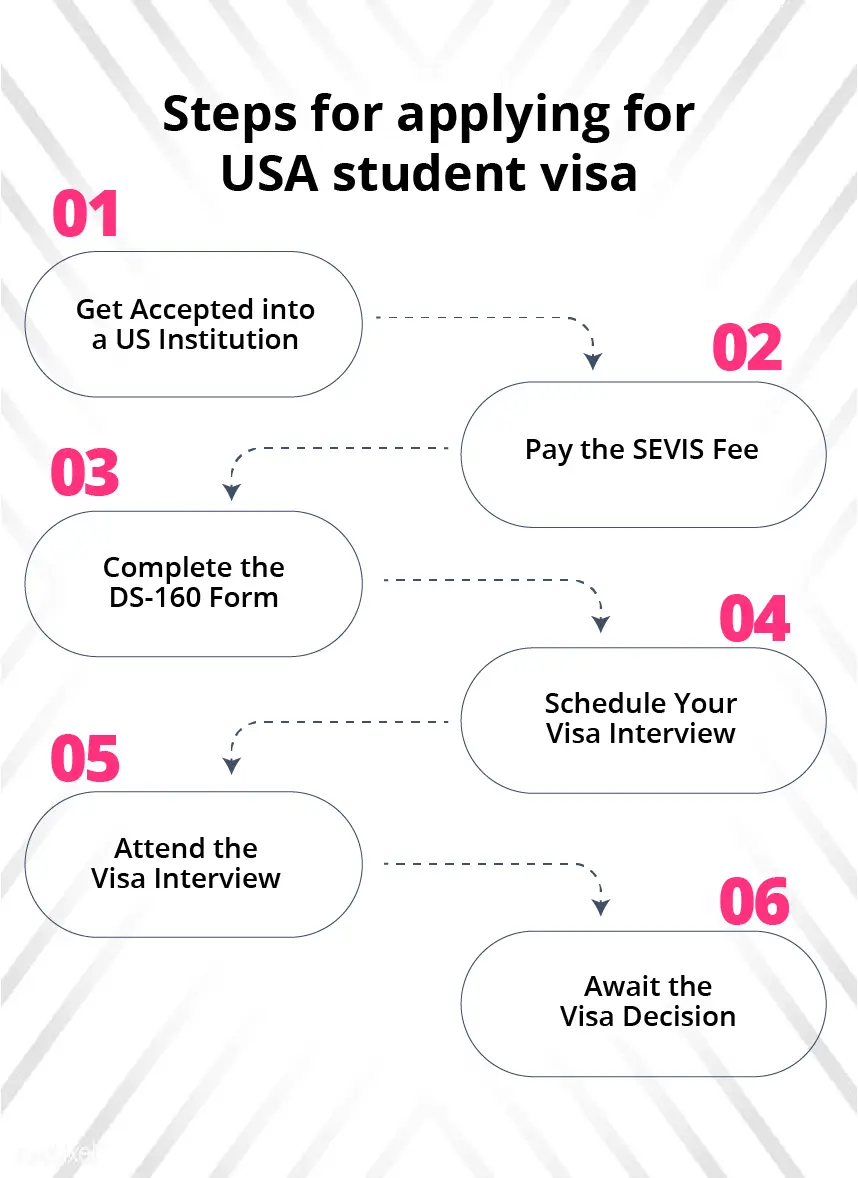
Step 1: Get Accepted into a US Institution
Before you can apply for a US student visa, you must receive an offer of admission from a recognised college or university in the USA. This involves researching programs, submitting your application, and obtaining an official acceptance letter.
At MetaApply IE, we guide you through this process – from selecting the right universities to ensuring your documents are ready for submission.
Once accepted, your chosen institution will issue a Form I-20, which confirms your admission and provides details about your course and proof of financial support.
Step 2: Pay the SEVIS Fee
After receiving your I-20 form, the next step is to pay the SEVIS (Student and Exchange Visitor Information System) fee. This is a mandatory one-time fee of USD 350 (approximately ₹29,500) for all F-1 visa applicants.
This fee must be paid before you begin your visa application process. It is non-refundable and separate from your visa interview fee.
Step 3: Complete the DS-160 Form
The DS-160 is the official online application form for non-immigrant US visas. It must be completed accurately and submitted online.
Once done, you will receive a DS-160 confirmation page with a barcode, which you must print and carry with you to your visa interview.
Step 4: Schedule Your Visa Interview
After paying the SEVIS fee and completing the DS-160 form, you can schedule your visa interview at the nearest US Embassy or Consulate.
It is advisable to book your appointment well in advance, as interview slots may fill up quickly, especially during peak seasons.
Step 5: Attend the Visa Interview
During the interview, a consular officer will assess your application and ask questions to determine your academic intentions, reasons for choosing your university, and future plans.
Be honest, confident, and clear about your study goals and reasons for returning to India after completing your program.
Step 6: Await the Visa Decision
In many cases, visa decisions are provided immediately after the interview. However, some applications may require additional processing and can take 8 to 13 weeks.
You are advised to apply well in advance of your course start date and regularly check the official US visa website for current processing times.
USA Student Visa Requirements & Documents
Now, let’s look at what you need to qualify for a USA student visa – both in terms of overall eligibility and documentation. The requirements are straightforward but demand careful attention to detail.
Basic Eligibility Requirements
1. Acceptance into a US Institution
You must have an offer of admission to a full-time academic programme at an accredited university or college in the United States.
2. Proof of Financial Support
You are required to demonstrate that you have sufficient funds to cover your tuition fees, living expenses, and related costs for the duration of your stay. This typically involves:
- Recent bank statements
- Affidavits of financial support
- Scholarship award letters (if applicable)
3. Intent to Return to India
As an F-1 visa applicant, you must prove that you do not intend to immigrate to the US permanently. This is usually done by showing strong ties to India, such as:
- Family connections
- Property ownership
- A job offers or career plans in India
Document Checklist for Your Visa Interview
Ensure you carry the following documents to your US student visa interview:
- A valid passport (must be valid for at least six months beyond your intended stay in the US)
- DS-160 confirmation page with barcode
- SEVIS fee payment receipt
- Form I-20 signed by your Designated School Official (DSO)
- Visa application fee receipt (if applicable)
- Passport-sized photograph as per US visa specifications
- Proof of financial support, including bank statements and affidavits
- Admission letter from the university
- Academic transcripts and certificates
Before attending your interview, double-check that all documents are complete, accurate, and up to date. Missing or incorrect paperwork may delay your visa processing.
| S. No. | Location | Type |
|---|---|---|
| 1 | USA Embassy, New Delhi | Embassy |
| 2 | USA Consulate, Mumbai | Consulate |
| 3 | USA Consulate, Chennai | Consulate |
| 4 | USA Consulate, Hyderabad | Consulate |
| 5 | USA Consulate, Kolkata | Consulate |
Note: You can schedule your visa appointment at any of these centers, not necessarily the one nearest to your hometown.
Costs Involved in the USA Student Visa Application Process
While there are no rules requiring a minimum bank balance to apply for a USA student visa, it costs around $535 (₹45,000) to obtain your F-1 student visa. The cost is broken down into two fees:
SEVIS Fee: $350 (₹29,500)
Visa Application (MRV) Fee: $185 (~₹15,500)
You can apply for your student nonimmigrant visa up to 365 days before your program start date. The earlier the better! Remember not to wait too long after you receive your acceptance letter, because it can take several months to complete your USA student visa process from India.
What if You Are Too Late to Schedule Your Visa Interview?
If you are late to the application process to get a USA student visa from India, don’t worry – USA consulates and embassies also have an expedited interview appointment option for students who are about to start their university programs. But first, you must go through the regular process and pay the visa fees. To start:
- Complete the online written portion of your application (DS-160)
- Pay the application fee
- Schedule your appointment for the first available time, even if it is too late for your program start date
Once this initial paperwork is complete, you can apply for an expedited appointment, and the consulate may consider your request for a closer appointment date. To submit an expedited request, the USA Bureau of Consular Affairs recommends you complete the Expedited Request Form or reach out to the embassy or consulate where you will conduct your interview to make an appointment for an expedited meeting. You can request assistance to complete the expedited appointment from the India call centre by phone as well. The embassy will email you with further instructions after you submit your request, generally within two days.
What Happens If You Miss Your Visa Interview Slot?
If the earliest available appointment date is too late for your program start date, you can request an expedited USA student visa appointment.
To do this:
- First, schedule the earliest available interview.
- Then submit a request for expedited processing through your USA study visa profile.
- Provide documentation proving your urgency (such as your university’s start date).
Embassy staff will review your request and respond within a few business days.
What If Your USA Student Visa Is Denied?
Visa denials can happen, often due to incomplete paperwork, insufficient financial proof, or failure to convince the officer of your intention to return to India. But the good news is: even if your USA student visa application gets denied, you can reapply after addressing the reason for the denial.
In some cases, you may also be eligible for a waiver of ineligibility if you can demonstrate that the issue has been resolved. There’s no mandatory waiting period, but make sure to strengthen your case before your next visa interview.
Important Things Indian Students Should Know About the USA Student Visa
Visa Validity and Extensions:
A F-1 visa typically remains valid for the duration of your academic program in the USA, with an additional 60-day grace period after your course completion. If you need more time, whether for work, internships, or further education – you can request a USA student visa extension by filing Form I-539 with the U.S. Citizenship and Immigration Services (USCIS). Filing online costs $420 (~₹35,000), while paper filing requires a $470 (~39,500₹) fee.
Health Insurance for Indian Students:
Although the USA law doesn’t mandate health insurance for F-1 visa holders, most USA universities require it for enrollment. Some automatically enrol international students in university-sponsored plans, while others allow you to purchase insurance independently; provided it meets their minimum coverage requirements. Health insurance costs can vary, but they typically cost $1,500 – 2,500 (₹1.2 – 2 Lakhs) for annual plans.
Transferring Schools within the USA:
Students holding F-1 visas can transfer between universities without needing to return to India or reapply for a USA student visa. However, you must maintain continuous student status throughout the process. It’s important to coordinate closely with your Designated School Officer (DSO), who will officially manage the transfer through your SEVIS (Student and Exchange Visitor Information System) record.
International Travel on an F-1 Visa:
Traveling outside the USA during your studies is allowed, but you must ensure your passport is valid for at least six months beyond your re-entry date. In addition to your passport, carry a valid F-1 visa, a recently endorsed Form I-20 (signed by your DSO for travel), and proof of sufficient financial resources. Be mindful that if you stay outside the USA for over five months, your F-1 status could be at risk.
Working while Studying in the USA:
International students in F-1 status are permitted to work part-time on campus during the academic year (up to 20 hours per week) and full-time during official breaks. Off-campus work opportunities such as CPT (Curricular Practical Training) and OPT (Optional Practical Training) are also available, but they require prior authorisation and must be related to your field of study. Here’s a list of all employment paths for international students:
- Optional Practical Training (OPT) or Curricular Practical Training (CPT)
- STEM OPT extension
- On-campus employment
- Severe economic hardship
- Approved international organisation
The first step to working on an F-1 visa is to talk with your DSO. Your DSO will have to approve and register any employment you take, so it is a good idea to communicate regularly with them throughout your job search. In addition, your DSO can help answer questions and find eligible positions. For most work, you will have to be enrolled and active in your university program for more than 12 months. Your MetaApply IE counsellor can also help you navigate F-1 visa employment restrictions as well, so be sure to reach out to us with any questions you may have!
How MetaApply IE Can Help in the USA Student Visa Process
The process of obtaining a USA student visa from India is quite manageable, as long as you stay organised and plan ahead. From getting accepted into a USA school to attending your visa interview, following everything mentioned above carefully will definitely help make your dream of studying in the USA a reality!
If you need further help in navigating the USA study visa process, you can always reach out to us. At MetaApply IE, we offer a comprehensive range of services to simplify your journey of studying abroad. From selecting the right university and course to helping you settle in your new home abroad, we are there with you every step of the way. Our team of experts makes applying for a USA student visa from India easier via:
Visa Process Assistance: We guide you through every step of the USA student visa process, ensuring that all forms and requirements are accurately completed and submitted.
Financial Planning Guidance: We assist with understanding the USA student visa fees, helping plan your finances, and securing scholarships and education loans to cover tuition and living expenses.
Document Support: Our experts help you gather and organise all the documents needed for your USA study visa interview.
Application Monitoring: We track the progress of your visa application and provide prompt solutions if any issues arise.
Visa Interview Training: We offer practical tips and mock interview sessions to help you confidently prepare for your visa interview.
Applying for a USA student visa as an Indian student in 2025 might seem a little intimidating, but it’s very achievable. Start early, stay organised, and be honest and confident during your interview. Remember: thousands of Indian students successfully make this journey every year, and with the right steps, you can too! And with MetaApply IE, your dream of studying in the USA is much closer – and much simpler – than you think.
Book a consultation with us and take the first step towards securing your future in the USA today!
Note: All prices mentioned are approximate values. Students should check official government websites or the respective university websites for exact figures.
Frequently Asked Questions
You can apply up to 365 days before your program start date. Apply as soon as you receive your I-20 form to avoid delays, especially since visa processing can take up to 8 to 13 weeks.
The total cost is around $535 (₹45,000), which includes a $350 SEVIS fee and a $185 visa application fee (MRV). Additional costs may apply for documentation, travel, or visa reapplication, if needed.
If denied, you can reapply immediately after addressing the issue, such as improving financial proof or clarifying your study intent. There’s no fixed waiting period, but ensure your documents and answers are stronger next time.


